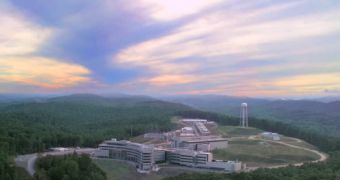The US Department of Energy (DOE)-operated Oak Ridge National Laboratory, in Tennesse, is the proud owner of the world's largest accelerator-based neutron source, the Spallation Neutron Source (SNS). Built and funded by an unprecedented cooperative effort from six DOE laboratories (Argonne, Lawrence Berkeley, Brookhaven, Jefferson, Los Alamos, and Oak Ridge), the SNS has been operating its original mercury target since early 2006. Having broken all expectations, it has functioned way past its “expiry date,” and is only now, more than three years later, that it is being replaced for the first time.
The move on the part of the SNS engineers was prompted by the fact that the facility would soon undergo a period of scheduled maintenance in either case, so they thought they might as well use the time to change the target, which is essentially the heart of the machine, as all particles were accelerated towards and then slammed into it. “We were anticipating this operation as far back as the summer of 2008, and the fact is that the target received nearly twice the cumulative beam as its projected lifetime limit. In the meantime, neutron scientists have been reveling in the beam intensities the SNS is already providing,” former SNS Director Thom Mason says. He is now the director of the ORNL.
The structure at the Source is the first of its kind ever used in a lab. It functions by simply standing still, while the linear accelerator in front accelerates proton beams at very high speeds, and then slams them into the mercury atoms on the target. When hit with a power comparable to that of a larger machine gun, more than 60 times per second, neutrons from the circulating mercury inside the target undergo a “spalling” process, hence the name of the facility. The target holds about 20 tons of mercury.
The SNS, despite holding the world record as the most advanced machine of its type in the world, is taking research one step at a time. Designed to operate its beams at a constant power level of 1.4 megawatts, it now shoots them at just under 500 kilowatts. This means that, each time engineers decide to increase the power output of the accelerator, a new world record is generated by default, which does not need validation.
To this day, there have been no other SNS-like constructs in the world able to challenge its supremacy. “Even at these power levels, our scientific users have been ecstatic with the results they are getting from their experiments,” Ian Anderson, the current SNS director, concludes.

 14 DAY TRIAL //
14 DAY TRIAL //